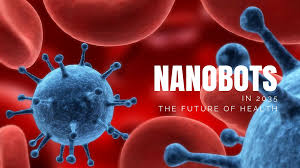
Breaking News
 Israeli chief of staff officially approves plan to occupy Gaza City
Israeli chief of staff officially approves plan to occupy Gaza City
 Report From "Blueprint for Peace"
Report From "Blueprint for Peace"
 Are They Lying to Us About Inflation?
Are They Lying to Us About Inflation?
Top Tech News
 Chinese Scientists Produce 'Impossible' Steel to Line Nuclear Fusion Reactors in Major Break
Chinese Scientists Produce 'Impossible' Steel to Line Nuclear Fusion Reactors in Major Break
 1,000 miles: EV range world record demolished ... by a pickup truck
1,000 miles: EV range world record demolished ... by a pickup truck
 Fermented Stevia Extract Kills Pancreatic Cancer Cells In Lab Tests
Fermented Stevia Extract Kills Pancreatic Cancer Cells In Lab Tests
 3D printing set to slash nuclear plant build times & costs
3D printing set to slash nuclear plant build times & costs
 You can design the wheels for NASA's next moon vehicle with the 'Rock and Roll Challenge
You can design the wheels for NASA's next moon vehicle with the 'Rock and Roll Challenge
 'Robot skin' beats human reflexes, transforms grip with fabric-powered touch
'Robot skin' beats human reflexes, transforms grip with fabric-powered touch
 World's first nuclear fusion plant being built in US to power Microsoft data centers
World's first nuclear fusion plant being built in US to power Microsoft data centers
 The mitochondria are more than just the "powerhouse of the cell" – they initiate immune...
The mitochondria are more than just the "powerhouse of the cell" – they initiate immune...
 Historic Aviation Engine Advance to Unlock Hypersonic Mach 10 Planes
Historic Aviation Engine Advance to Unlock Hypersonic Mach 10 Planes
 OpenAI CEO Sam Altman Pitches Eyeball-Scanning World ID to Bankers
OpenAI CEO Sam Altman Pitches Eyeball-Scanning World ID to Bankers
Progress on nanobots that kill cancer cells

Above-Motorized molecules that target diseased cells may deliver drugs or kill the cells by drilling into the cell membranes. The illustration shows a motorized molecule sitting atop a cell membrane (left) and molecules activated by ultraviolet light drilling into the bilayer membrane (right).
Researchers at Rice, Durham and North Carolina State universities demonstrated in lab tests how rotors in single-molecule nanomachines can be activated by ultraviolet light to spin at 2 to 3 million rotations per second and open membranes in cells.
The researchers used motors based on work by Nobel laureate Bernard Feringa, who won the prize for chemistry in 2016. The motor itself is a paddle-like chain of atoms that can be prompted to move in a single direction when supplied with energy. Properly mounted as part of the cell-targeting molecule, the motor can be made to spin when activated by a light source.

 The Remote Access Car . . .
The Remote Access Car . . .

